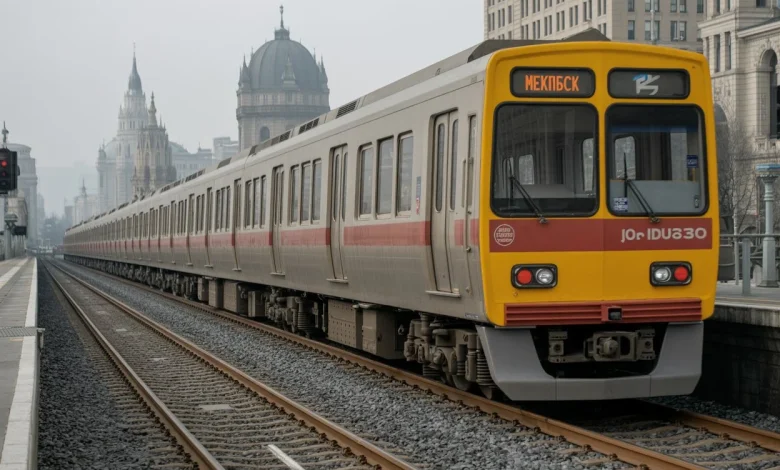Magnetic Trains Revolutionize High-Speed Travel and Provide a Greener, Faster Future for Global Transportation – Here’s How

Published on
November 18, 2025
In the world of Rail News, one of the most exciting developments is the rise of magnetic trains. These innovative trains, also known as maglev trains, use magnetic levitation technology to float above their tracks, creating a frictionless ride. This technology allows them to achieve exceptional speeds, making them a game-changer for high-speed travel and eco-friendly transport solutions. With the demand for faster and greener travel options on the rise, the introduction of maglev technology is transforming the way we think about transportation. In this article, we’ll explore how magnetic trains work, their speed capabilities, and why they represent the future of sustainable transportation.
What Are Magnetic Trains?
Magnetic trains, or maglev trains, represent a revolutionary approach to transportation. Unlike traditional trains that rely on wheels to move along tracks, maglev trains hover above the track using magnetic levitation. This eliminates the friction that usually slows down trains, enabling them to travel at much higher speeds while offering a smoother and more energy-efficient ride. Magnetic levitation relies on the use of magnets to lift and propel the train, which makes it a standout technology in the world of Rail News.
How Do Magnetic Trains Levitate?
The key to magnetic trains’ unique ability to levitate lies in the powerful magnets placed both under the train and within the track. These magnets create a repelling force strong enough to lift the train, causing it to hover a few centimeters above the track. The absence of physical contact between the train and the track means there is no friction, which is a significant advantage over traditional trains that rely on wheels.
There are two primary systems used for levitation in maglev technology:
- Electromagnetic Suspension (EMS): This system uses electromagnets to attract the train to the track, creating the lift necessary to keep it suspended.
- Electrodynamic Suspension (EDS): This system works by using magnets that repel each other, allowing the train to hover above the track.
Both methods rely on the principles of electromagnetism to create the levitation effect, ensuring that the train remains elevated and can travel smoothly.
How Do Magnetic Trains Move?
After levitation, the next challenge is getting the train to move forward. Maglev trains achieve this by using magnetic fields to create forward motion. In both EMS and EDS systems, magnets interact with the track’s magnetic fields to pull or push the train along.
- In the EMS system, magnetic fields attract the train, pulling it forward along the track.
- In the EDS system, magnets repel each other, pushing the train ahead.
This magnetic propulsion system eliminates the need for conventional wheels or engines, making the train glide forward with minimal friction. This unique form of movement results in a quieter, smoother, and more efficient journey.
Speed and Efficiency of Magnetic Trains
One of the most compelling aspects of magnetic trains, as highlighted in Rail News, is their speed. Without friction to slow them down, maglev trains can achieve extraordinary speeds. During tests, these trains have reached speeds of over 600 km/h, and operational trains in countries like China already travel at speeds of 430 km/h. This makes maglev trains significantly faster than traditional rail systems.
The lack of friction also makes maglev trains more energy-efficient. With reduced resistance, these trains consume less power per passenger compared to conventional high-speed trains, planes, and cars. This makes them an appealing option for sustainable transportation. Additionally, the absence of track wear and tear due to the lack of contact between the train and the track reduces maintenance costs over time.
Guidance and Stability in Magnetic Trains
Magnetic trains are designed not only for speed but also for stability. Magnets placed on the train help keep it stable while traveling at high speeds, preventing it from swaying or moving side to side. This ensures that passengers experience a smooth, comfortable ride even in challenging conditions.
To further enhance stability, advanced sensors and computer systems continuously monitor the train’s position. These systems make real-time adjustments to the magnetic fields, keeping the train level and balanced. As a result, maglev trains offer an unparalleled level of stability, even at incredible speeds.
Environmental Benefits of Magnetic Trains
Magnetic trains offer significant environmental benefits, making them a key component in the future of eco-friendly transport. Unlike conventional rail systems that rely on fossil fuels, maglev trains can be powered by renewable energy sources like solar and wind power. This makes them one of the most sustainable modes of transport available.
In addition to their low environmental impact, maglev trains produce minimal noise and vibration. The lack of physical contact with the track reduces noise pollution, making these trains ideal for both urban and rural environments. By reducing emissions and operating more quietly, maglev trains are helping to move us toward a greener, more sustainable transportation future.
The Future of Magnetic Trains
The future of magnetic trains is bright, with ongoing developments pushing the boundaries of speed and efficiency. Engineers are currently testing maglev trains in vacuum tubes, which could enable these trains to reach speeds of over 1,000 km/h, making them the fastest mode of land transport. This would surpass the speed of commercial air travel, offering a new, faster way to travel long distances.
Maglev technology is also being explored for use in urban transportation systems. Concepts for floating trams and buses powered by maglev technology are already in development, which could help reduce congestion and offer more sustainable transport options in cities.
Conclusion
As Rail News continues to cover the advancements in magnetic train technology, it’s clear that these trains are changing the future of transportation. By using magnetic levitation to eliminate friction, maglev trains can achieve high speeds while offering a smooth, energy-efficient, and environmentally friendly alternative to traditional rail systems. With continued innovation in this field, maglev trains are set to play a key role in the global shift toward more sustainable transportation, providing faster and greener travel options for the future.





